Beyond barbed wire: South Korea invites public to hike DMZ
New trails, currently open only to Koreans for security reasons, provide a novel perspective on the heavily-fortified border.
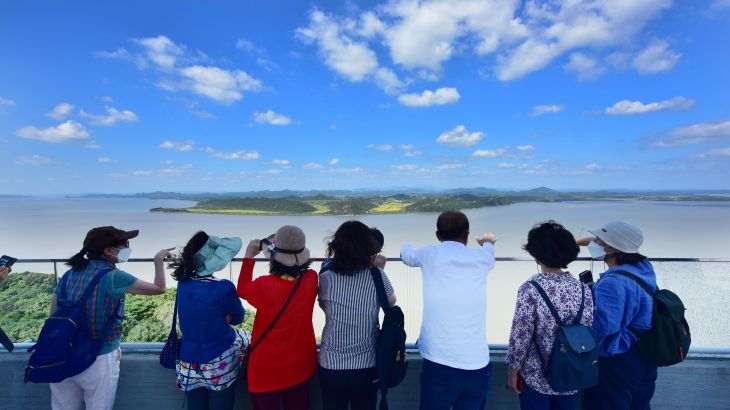
Ganghwa County, South Korea – Barbed wire is coiled in large circles along the top of a high fence that runs the length of the promenade. A military escort stands vigilant amid the verdant surroundings. Soldier watchtowers dot the path.
This is the Demilitarized Zone (DMZ) that divides the Korean peninsula and is widely considered the world’s most heavily-fortified border.
Keep reading
list of 4 itemsA threat to Kim Jong Un? What the Washington Declaration means
US nuclear subs to dock in South Korea to deter Pyongyang: Biden
South Korea president opens US tour with NASA space centre visit
Just more than 10 years ago, the DMZ was deemed a “bad idea” and “very regretful” by officials in charge of promoting South Korea’s image abroad.
But times have changed and the government is now eager to promote the area as a site of peace and contemplation, recently opening 11 “DMZ peace trails” to the public.
Now is the “time to overcome the situation of division”, Cho Yong-man, the second vice minister of tourism, told journalists on a recent tour of the trails.
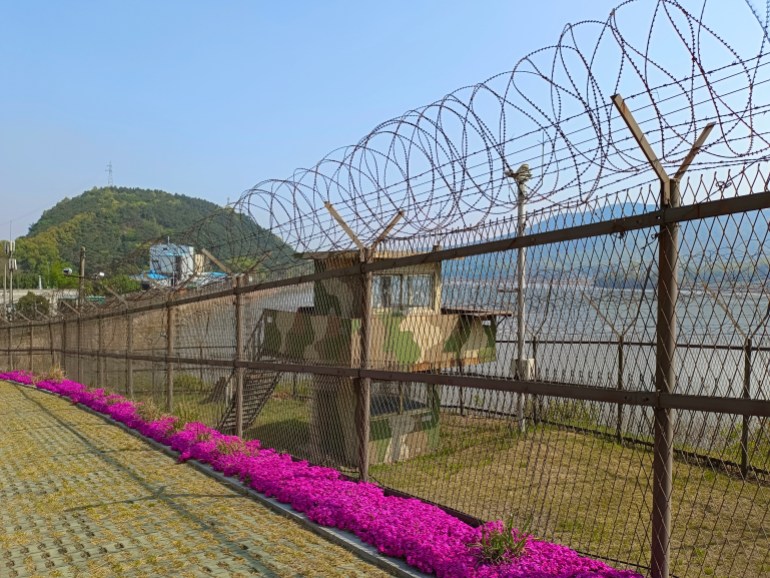
The peace trails are designed to allow visitors to walk and explore areas where nature has thrived in the absence of people, including in Ganghwa County, a group of islands that border North Korea and lie just 45km (28 miles) from the South Korean capital Seoul.
The tour starts at the Ganghwa War Museum where photos mounted outdoors, along the wire fence, help visitors learn about the history of the 1950-1953 Korean War, which ended not in a peace treaty but an armistice.
The devastating conflict tore the Korean Peninsula apart, leaving millions dead and the country divided; a legacy still visible today in the DMZ, a 250km (155 miles) long and 4km (2.5 miles) wide buffer zone between North and South Korea.
A memorial at the museum site honours the war veterans from Ganghwa as well as United Nations forces, which included 16 countries that fought alongside South Korea during the war and five that provided medical assistance.
A 13km (8 miles) drive away, through a checkpoint inside the Civilian Control Line (CCL), is a restaurant serving both South and North Korean dishes, with breathtaking views of the river that divides the two sides.
While not technically part of the DMZ, which only covers the land, the estuary of the Han River that runs 67km (41 miles) from the mouth of the Imjin River at the tip of Ganghwa County is classified as neutral waters, though in reality no one is actually allowed to use it.
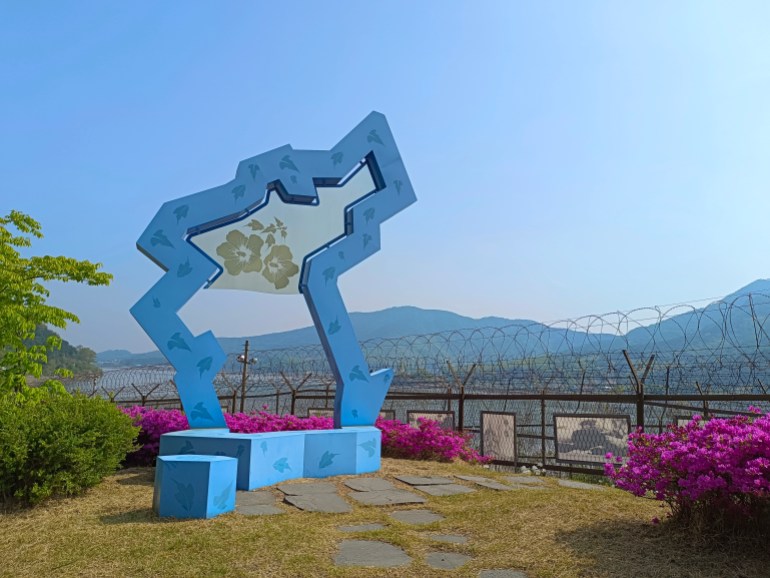
Untouched by human activity, the waterway now harbours a large number of rare plants and animals, including different eagles, white-naped cranes, swan geese, bean geese, Seoul frogs, and black-faced spoonbills as well as endangered species. Because no detailed survey of the aquatic ecosystem has ever been conducted, it is assumed the waterway is also home to unrecorded species.
The Ganghwa Peace Observatory is located uphill from the restaurant and includes indoor and outdoor viewing platforms.
Through binoculars, walkers get a rare glimpse into the communist nation: workers, farmers, fields and houses on the opposite bank. Although minuscule, it is a way to see everyday North Korean citizens through a more human lens – people who are as much victims of the tragic division of the peninsula as South Koreans are.
Civilians on both sides will probably never be able to meet in person.
Family reunions brokered between the two countries’ governments for those wishing to reconnect with their loved ones on the other side of the border have been infrequent. The most recent heartbreaking event took place in 2018, during a period of thawing relations under the previous Moon Jae-in administration. Every month, the number of family members on waiting lists falls by the hundreds as they die of old age. More than 41,000 people remain alive among the 133,000 who have registered to date.
The next stop brings visitors to the tour’s most dramatic site, the 1.5km barbed-wire path between the Uidudondae and Buljangdondae watchtowers, historic sites used for defence purposes during Korea’s Joseon dynasty (1392–1910) and now repurposed for a modern-day military.
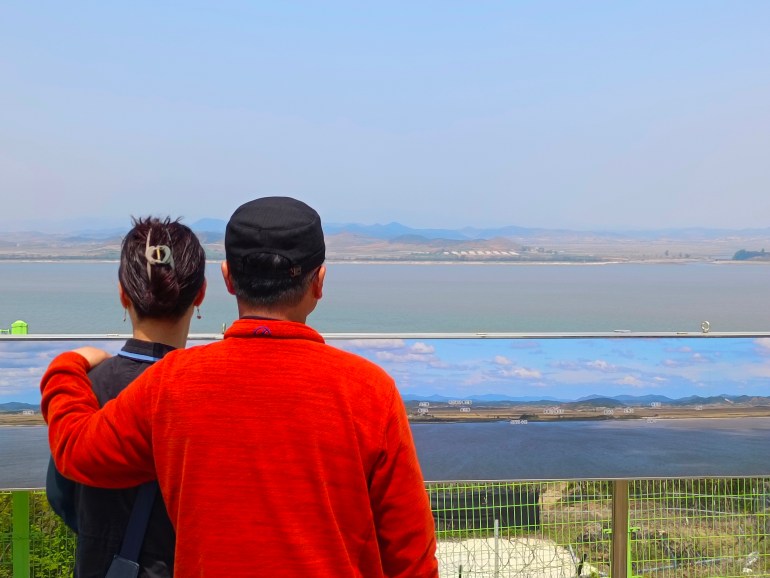
The area, one of the closest places South Korean civilians will ever get to North Korea, was previously closed to the public but is now open for the Ganghwa DMZ peace trail. To “protect military facilities”, photography is strictly prohibited along this stretch, according to Lieutenant Colonel Park Ki-byung, one of the military personnel who must accompany this part of the tour.
With visitors donning fluorescent yellow jackets, conflict is unlikely but not impossible. North Korea has previously attacked its southern neighbour, including shelling Yeonpyeong Island in 2010. In recent years, gunfire has also been exchanged along the DMZ. Lieutenant Colonel Park emphasises that the safety of tourists is their top priority.
The tranquillity of nature, with rice paddies on one side and an untouched shoreline on the other side of the fence, is a stark contrast to traditional DMZ tours, which take foreign tourists to the Joint Security Area truce village of Panmunjom.
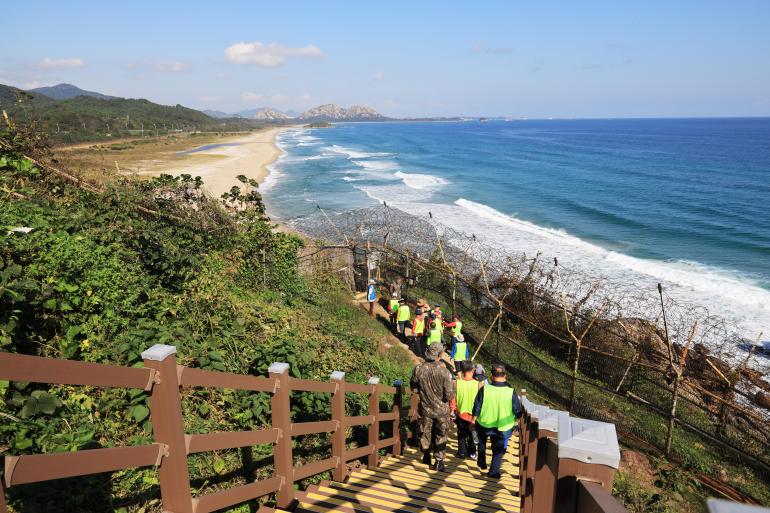
Panmunjom tours are often regarded as a must-see for any first-time visitor to South Korea and are distinguished by a theatrical build-up of tension provided by American soldiers.
The newly-opened peace trails are the result of summit diplomacy in 2018 when the two Koreas agreed to “transform the DMZ into a peace zone” in the Panmunjom Declaration. However, their opening was hampered by concerns about the spread of swine fever and later by COVID-19.
They are located along the DMZ in areas such as Gimpo, Paju and Cheorwon and are made up of sections participants can enjoy on foot or by vehicle for safety and wildlife protection reasons. Due to the nature of the security area, only Korean citizens are eligible to apply, at least for now.
Choi Seong-ho, a resident of Gyodong Island in Ganghwa County, describes the area as a “cosy” and inclusive place that has always welcomed people from diverse backgrounds. He has a special affection for the island because it provided refuge to people who fled North Korea during the war, including his father and grandfather, who he says were warmly received by locals.
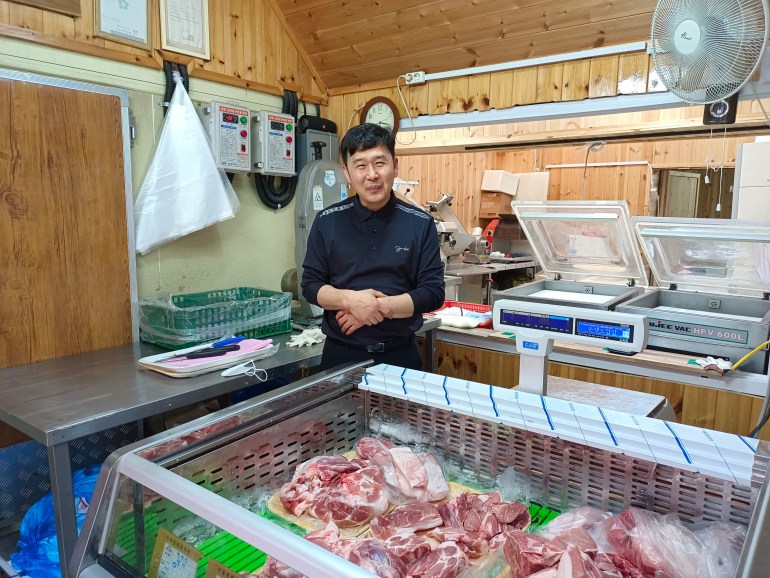
He is now the third generation to run a butcher shop and adjoining restaurant in the very Instagrammable Daeryong Market, also located on the border and the final stop on the Ganghwa DMZ peace trail.
For him, living on North Korea’s doorstep has allowed him to observe the peaceful coexistence of their community with the same people as his own family, despite differing ideologies.
“I don’t know about reunification, but I know we should keep close relations and avoid conflict,” he tells Al Jazeera.
“No one likes war.”